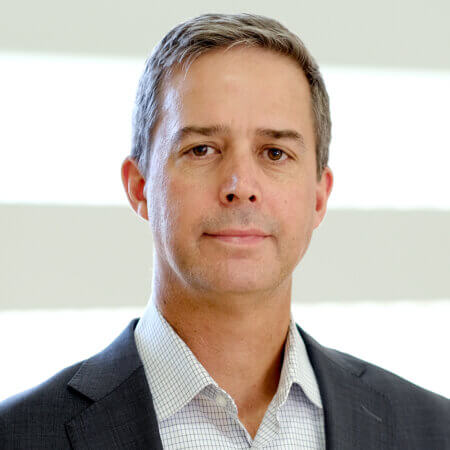
As the disconnect between policy ambitions and on-the-ground realities widen, asset managers have to cope the challenge of the changing face of ESG.
The Changing Face of ESG
Jake Walko: Hi and welcome to another episode of Away from the Noise Thornburg Investment Management Podcast on key investment topics, economics and market developments of the day. I’m Jake Walko. Director of ESG Investing and Global Investment Stewardship. Joining us today are Emily Leveille and Matt Burdett, both portfolio managers here in our International Equities Department. I think what we want to do today on this podcast is take a more provocative route and do something a little different from maybe the podcast that you’ve been accustomed to and the topic at hand is ESG broadly, but particularly the sort of the conundrums and tradeoffs in ESG.
And what we want to do differently is steer away from what you’ve probably heard a lot about, which is what is ESG? What is the ESG landscape? There’s a really great amount of information out there on education and the evolving landscape and really the in many ways the lack of answers on what is ESG and how to do it in a particular way.
What we want to tackle today is really the more recent development that really stem from the quite changing economic landscape of the last year. And there’s been a number of curveballs thrown in the world of ESG and for a long time it has felt like ESG has really been trending towards a kind of an orthodoxy. And you might have seen this in the news, essentially represented as what is an ESG company.
And that really largely has meant what is the company that the fewest number of people find controversial And one of my observations is as a practitioner in this space has been that when you find the thing that has the broadest consensus and is the least controversial it’s probably not well aligned with the investment opportunity. And as active fundamental managers, we are very much always interested in misunderstood opportunities. And ESG is the same thing. We want to understand which companies are actually doing these things well and are actually well-positioned to take advantage of future markets that are more sustainable. And society that is more focused on this, but it’s often not the obvious names. So today with Matt and Emily, we’re going to explore a lot of these less obvious names.
And I hope what you get out of it is you hear names that you don’t think should belong in portfolios for ESG reasons at first. But I hope that we will make a solid case for why we believe that they have a place not just as great investments, but also as great ESG investments. So maybe starting with Matt, we’re seeing this disconnect between the policy level ambitions on energy across the world and then very much the on the ground realities of operationalizing these new resources, building them out, actually connecting them to grid, bringing into customers, having them adjust to, you know, not just the sort of intraday realities of, you know, when we use heaters or ACs, but also the geopolitical evolution. My question to you is, where do you see otherwise sustainable companies struggling to cope with some of these challenges?
Matt Burdett: Look, I think energy transition overall is a much more complicated dynamic than I think most people probably think in terms of the pace at which we can transition basically power markets to more renewable and cleaner energy, got a dose of reality in the last year or so where it’s somewhat collided with the fact that the system was just not prepared to be as green is many people would like it to be.
And this is all being reflected now in the power markets and all talk to Europe because that’s an area where it’s probably most acute. Let’s say the forward power price in Italy right now is about €153 per megawatt hour, ok? So that’s for next year’s power delivery, which is typically the way power is sold in the market.
If you were to go back several years that number would be somewhere around the low forties. So, it’s a material market recognition of the fact that the system is just very, very tight. And so, companies have to manage, one providing power at a reasonable price to its customers and also manage the fact that they need to move their generation fleet to a cleaner mix.
So, a dynamic challenge that’s happened is we’re very close to an Italian utility that has all types of generation thermal and renewable, one of the largest renewable generators in the world. You know, they have the dilemma of do we run more coal to generate more power, even though that’s going to hurt our emissions ratings and various ESG sources will give them a strike for that.
But the fact of the matter is it’s a much more complicated problem. And the right answer, at least in our view here at Thornburg, is you have multiple goals and multiple stakeholders that you need to address. There’s your shareholders, there’s customers, there’s employees and so the trade that they have to balance is, hey, we’re going to have more emissions from running coal plants.
But we’re helping to produce more power, which brings more supply into the market and helps to keep the prices down, even though prices are very, very high right now. So, I think it’s a tough balance that everyone has to consider, given the state of where we are with energy right now.
Jake Walko: It’s always very interesting because the example that you’re mentioning obviously predominates in the environmental space. And I think in many ways emissions have been at the forefront of a lot of ESG analysis because they were a number, they were something that we could actually ask companies about and start quantifying. I recall a lot of conversations that we’ve had.
You know, you’ve sort of with your commentary touched on the social dimension here, which is the actual customers, right? Having people have heat in their homes. Right, having power. And another thing that I would make an observation about on the same instance is this is a company that has really been at the forefront of a lot of what is sometimes described as the just transition movement, which is the idea of making sure that workers who are attached to projects like coal power plants that are maybe being phased out, have a place to go and are still engaged in society and are still employed.
And the social element here is this company really has these great job retraining programs where they match the older employees from those coal power plants with maybe the younger employees who teach each other these skills that are important to be effective contributors to an energy company in general, whatever the power mix. So, I’m fascinated by these tradeoffs, and I do think that it takes a lot of integrity and conviction both on the management side, as well as obviously on your side as a portfolio manager to understand that both the E and the S really matter.
And they matter at different times to different people, but they’re equally important. Maybe shifting over to Emily, obviously open-ended question, but have you made investments that that have these really imperfect tradeoffs and where maybe the company sort of appears poor in one area, but in your judgment, as a you know, as an analyst that looks at the business as a whole, the net effect is an important positive?
Emily Leveille: I would say. Absolutely. One of the investments that comes to mind or one of the industries that comes to mind for me at the forefront is the semiconductor manufacturing industry. I’ll take the largest global foundry as an example. They’re primarily Taiwanese based. But, you know, I think in this case, there’s a number of different factors to consider.
There’s water usage, there’s power consumption, there’s energy usage of the products themselves that they sell as well as the contribution of those products to climate change mitigation. And then from a social standpoint, there are also, you know, tremendous economic benefits at a very high level of skill and skilled labor to the countries where this company operates, Taiwan being the primary one.
But they also have fabs in China, the United States and other parts of Southeast Asia. So maybe I’ll start with just sort of the, you know, the water usage in absolute terms as chip designs move from 2D architecture to what they call 3D FinFET architecture, they use more types and quantities of chemicals and they also use more water.
Water is a critical component for cleaning wafers between processes and also keeping all of the materials cool. So, to give you a sense of how much water this company use— in 2019 they were using an average of 156,000 tons of water a day. That’s roughly the amount of water that 845 households uses in a day so really significant but as an active manager we can also look into this more deeply and we can see that this company actually is doing a lot to limit its net water usage.
So, they actually recycle around 87% of the water that they use and they have a number of additional initiatives rolling out in the next ten years to increase the rate of recycling utilization as well as developing wastewater treatment plants to be able to utilize more of that water. Well, water usage in absolute terms has also increased over time.
Actually, water usage per chip produced has fallen by 27% since 2010. So, you know the efficiency of each chip in terms of water usage is, is improving another angle to consider that I mentioned initially is the power used by fabs and by the chips themselves, right? So, you know, the improvement in energy efficiency of chips themselves has moved roughly in line with processor speeds as transistors have become smaller over time.
Plus, people are using more specialized chips for specific purposes. And those are also more energy efficient. And then the third part of the discussion around chips is that the chips themselves are critical in their role in climate change mitigation you know as well as safety and security, and they’re really important for their role in efficiently connecting and monitoring devices and industrial processes such as auto manufacturing oil and gas refining, safety and security monitoring as well.
But the last part, I guess, is power consumption of the actual semi fabs themselves, and that also remains very high. We know that this company, but also a lot of other companies that are involved in the sort of the industrial fabrication of semiconductor chips are implementing a lot of efforts to reduce power consumption through basic engineering and design, improvements in process, cooling water systems, air conditioning in particular, but there’s certainly a lot more that can be done.
You know, really what we’re looking for from an investment standpoint is that companies are focused on the long term sustainability of their businesses and the real financial implications to some of these externalities, whether they be environmental or social and then are properly accounting for those and seeking ways to, you know, to mitigate those risks in the long term, because really the returns and the sustainability of these businesses depends on them being able to generate solutions to the environmental issues that they are contributing to.
Jake Walko: And so that’s a I think, a really fascinating example. One of the one of the things that often comes up in our conversations with clients is they’re very interested in in these sectors of the economy that are quite sophisticated and high tech. But Emily, I was hoping maybe you can think of an example that is something a little bit more tangible and directly connected to a consumer.
I think we obviously all use semiconductors in all our phones all the time. But from the perspective of a business where we have a daily interaction with it, what are some ideas on in investments and how do you think about the history in those spaces?
Emily Leveille: I’ll give you another example that we own. It is the largest Latin American e-commerce platform and really the societal and economic benefits here are we sort of refer to as the democratization and to access to goods and services. So both physical goods as well as access to payments and digital finance before e-commerce, you know, especially in emerging markets, but in the United States as well, there is really little price information outside of your local shops. So, if you lived in a rural area, there was only one or two places where you could go and buy a microwave. And the distribution of those goods to far flung places meant that you often paid more for a good in a small town than you would if you were a wealthier person living in a city trying to pay for that equivalent good. So what this company’s e-commerce platform has done through their significant investments in logistics plus, you know, price clarity across platform levels has really leveled the playing field for the consumer, but also for the seller of goods. So, instead of previously only being able to sell your goods in the small town that you operated in, you could actually sell, you know, across your entire country.
So, it really opens up the addressable market for you as a seller. Another economic or social angle is the access to financing and access to digital payments, which has allowed people maybe I’ll step back and just say, you know, in Latin America, access to finance and access to a bank account has historically been limited to the wealthier subset of the population, which is typically a significant minority of the population.
So, what this company did was it started to allow people to access payments digitally through a very simple digital wallet account. And as the product has developed, they are also now able to offer, you know, basic financing to sellers as well as consumers. But this is really significant in terms of, you know, financial inclusion in a region where banks have historically been very happy to, you know, to only lend and give bank accounts to this small subset of the population that was wealthy and also that had a formal job.
So, this company now has 36 million unique users in its on its fintech platform, which is, you know, a pretty, pretty significant number of people that it’s been able to address with these offerings. I guess another social angle is just the move to identify and remove counterfeit goods as much as possible. You know, this has helped the company in the sense that it has improved the trust that people have about the goods that are sold on its platform. But it’s also, you know, quote unquote, being a good citizen. It pays with regulators but it’s also paying with buyers, sellers and shareholders.
Jake Walko: I remember, you know, one of the interesting things about history in this particular case, was that this company just didn’t screen well from a lot of the traditional metrics. And that had to do with the fact that their business, as Emily described, was evolving and growing rapidly. And if you’re an active manager and you can take a look at the holistic picture and understand that this might be a blip or this is something that’s changing or in flux, it’s almost like you can see past the thing that might have screened this name out in a in a quant portfolio or some instance like that.
So, thank you for that, Emily. Those were both really fascinating examples. So, I wanted to change subjects a little bit. And this this I think we’ll go to Matt as a question. But to make an observation, often in the world of ESG, defense and aerospace, don’t get a lot of attention. I think that there is just a general view that there’s no place for those names in any portfolio and that they’re condemned in a way, I think, by a lot of ESG professionals.
We recently hosted a defense company, and this was right at the beginning of the crisis between Russia and Ukraine. And so obviously, that company was very excited about some of the ESG questions that were coming up for them as a business. What I wanted to explore with you, Matt, for a second is how do you think about defense and aerospace?
Why do you think these companies might be misunderstood by the average person? And I will volunteer here. Probably any of us who have ever flown have been on a plane manufactured by a company that is in the defense sector. So, I wanted to explore a little bit about the sort of the benefits that come out of aerospace and defense companies that you’ve seen, maybe some of the conundrums and the misunderstandings about what these businesses are and how you look at them as a portfolio manager.
Matt Burdett: This is probably one area where you’re going to get a lot of different opinions. And I guess first, maybe just aerospace generally, the airline industry is a critical industry, just you know, for the movement of people and goods across the world. And we’ve seen during the pandemic with disruptions that had happened how critical they were and with freight rates skyrocketing because supply was being crunched and everyone was having to pay for that.
And it’s part of the fairly significant contributor to inflation that we see today. So, the point is, you know, the industry serves a purpose for modern life. And I think we just have to be open-minded about that purpose and just trying to manage the impact that the industry has in particular on emissions, which the industry has been making progress on that front.
Now, with respect to defense, if you asked this question three years ago, you’d probably get a different answer from a lot of people. But I think the development with Russia and Ukraine have really opened people’s eyes to the fact that at the end of the day, the world is not popsicles and Tootsie Rolls, OK, there’s there are people out there.
There are leaders who have a vision of a world that’s not aligned with the vision of most people. And they will be aggressive as we’ve seen. So, I think we have to be open-minded and prepared everywhere for these types of events to happen. Unfortunately, this probably won’t be the last one. There’ll be something else, some point. So when you think about investing in the defense sector, you know, I think you have to kind of look at it through that lens. It is very complicated. Obviously, they make weapons and weapons cause destruction. But the flip side is that some of the bad actors in the world are going to have weapons, too. And they’re spending to advance their weapons. So, I think we just have to think about it in the context of, you know, the geopolitical sphere and what that might mean for freedom in the future. So, it’s a complicated question, Jake, and I think that’s part of the best answer I could give you at this point.
Jake Walko: That’s great. I always love throwing curveballs and I think I would just cap that point with most people. Maybe don’t realize how much these businesses have a defense division but also a civilian division that, you know, derives benefits from those technologies. You know, you mentioned freight and shipping, and obviously planes are vital. And I think in an interconnected world where we need semiconductors to be made in one place to go into a device that is protected by a patent that’s owned by another company and then shipped to a store that’s you know, yet another business, having a robust, well-functioning economy that supports all sectors and advancement of sustainability in all sectors is obviously quite important. So maybe exploring that theme of I gave you a subject that was provocative from its lack of ESG-ness, if I may call it that, Emily, maybe back to you. What might be a provocative example of a company that appears very sustainable on the surface, but a good researcher can develop some apprehensions about their business.
Emily Leveille: You know, I’ve looked quite a bit at the solar and the wind industry, particularly in China, but I don’t think that this is necessarily solely relevant to the Chinese industry for solar and wind. But I guess these are two sectors that are seen as, you know, being very critical to the energy transition. And obviously they absolutely are. But you know, a solar energy producing company is not necessarily a sustainable company and not necessarily the type of company that a long-term active investor might want to invest in, even though on the surface it might be categorized very easily as a beneficiary or a contributor to a more positive and sustainable ESG future. But, you know, for example, if we look at some of the some of the companies in the solar in the solar industry, you know, if this is a company that has, say, leveraged up its balance sheet to capture market share in what is a highly competitive and commoditized industry, you know, maybe it hasn’t properly calculated subsidy risks or opportunities for their business. You know, we know in in China, there have been a lot of issues around the usage of child labor in the production of solar panels for the industry. You know, these are all issues under the surface that, in my view, call into question whether this company is likely to exist in ten years. Or not, and therefore, I wouldn’t necessarily consider it a sustainable company to invest in.
You know, when we’re looking for in sustainability of companies is the sustainability of the business and the business model. And then also obviously the, you know, positive contribution in many cases to a more sustainable economic future or the sort of mitigation of some of those ESG risks. So, I think the point I’m trying to drive home is that really active management and fundamental analysis remains critical to making investment decisions around business fundamentals, but also around some of the ESG factors that have become so popular in in the sort of narrative and discussion around investing in the last five to ten years.
Jake Walko: And it’s only getting more complicated. Right? So, thank you. Thank you for that example. And I think the broad point on all of these, as we’re as we’re heading into time here, is that on the surface, these it’s easy to you know, be a sort of an armchair expert and say that this sector is good or that sector is bad or, you know, that’s some very easily accessible headline number tells you the full story on the sustainability of a business.
I hope what you’ve heard from us is really the type of research that we do and really trying to look under the hood and try to understand what’s going on with these businesses, what is their contribution? Is this business, as we’ve heard from these examples, good on the surface, but maybe bad underneath or maybe bad on the surface and good underneath.
And we think that that’s really where the opportunities are. The businesses that are not getting the consensus as high marks for their sort of glossy materials but are in fact making changes to their operations and not only care on the management level, but also operationalize these improvements over time and have a vision and a path forward that makes sure that they will function well, both as a as a profit generating business, but also as a as a contributor to society.
So, I wish we had ours on this. We are never short on examples. We hope you’ve enjoyed this podcast. Also, I want to thank you for listening. You can find this and other episodes of Away from the Noise at Thornburg dot com slash insights, as well as on Apple Podcasts, Spotify or wherever you listen to podcasts. Please rate subscribe and review us and you can also visit Thornburg dot com to see all of our market commentary.
Important information
The views expressed are subject to change and do not necessarily reflect the views of Thornburg Investment Management Incorporated. This information should not be relied upon as a recommendation or investment advice and is not intended to predict the performance of any investment or market.
This is not a solicitation or offer for any product or service, nor is it a complete analysis of every material fact concerning any market, industry, or investment. Data has been obtained from sources considered to be reliable. The Thornburg makes no representations as to the completeness or accuracy of such information and has no obligation to provide updates or changes. Thornburg does not accept any responsibility and cannot be held liable for any person’s use of or reliance on the information and opinions contained herein.
Investments carry risks, including possible loss of principal.
Outside the United States
This is directed to INVESTMENT PROFESSIONALS AND INSTITUTIONAL INVESTORS ONLY and is not intended for use by any person or entity in any jurisdiction or country where such distribution or use would be contrary to the laws or regulations applicable to their place of citizenship, domicile, or residence.
Thornburg is regulated by the U.S. Securities and Exchange Commission under U.S. laws, which may differ materially from laws in other jurisdictions. Any entity or person forwarding this to other parties takes full responsibility for insuring compliance with applicable securities laws in connection with its distribution.
Environment, social and governance (ESG) integration is the practice of incorporating ESG information into investment decisions to help enhance risk-adjusted returns and is not a mandate to make a positive impact on society or the world.
For United Kingdom, this communication is issued by Thornburg Investment Management Limited, TIM Limited, and approved by Robert Quinn Advisory LLP, which is authorized and regulated by the U.K. Financial Conduct Authority, FCA. TIM Limited is an appointed representative of Robert Quinn Advisory LLP.
This communication is exclusively intended for persons who are professional clients or eligible counterparties for the purposes of the FCA rules and other persons should not act or rely on it. This communication is not intended for use by any person or entity in any jurisdiction or country where such distribution or use would be contrary to local law or regulation.
For Hong Kong: This article is issued by Thornburg Investment Management (Asia) Limited (“Company”), a wholly-owned subsidiary of Thornburg Investment Management, Inc. The Company is currently licensed with the Hong Kong SFC for Type 1 regulated activity, with the CE No.: BPQ208.
The material is only intended for Individual, Corporate and Institutional Professional Investor Use Only and may not be reproduced or redistributed to any person without the written consent of Thornburg Investment Management (Asia) Limited or its affiliated companies.
The material has not been reviewed by the Securities and Futures Commission of Hong Kong.
This document is for informational purpose only and should not intended to constitute any tax, accounting, regulatory, legal, insurance or investment advice and does not constitute any offer or solicitation to offer or recommendation of any investment product/service from the Company. The information provided is not intended to predict the performance of any investment or market. Data has been obtained from sources considered reliable. Notwithstanding, the Company makes no representations as to the completeness or accuracy of such information or opinion and has no obligation to provide updates or changes. The Company does not accept any responsibility and cannot be held liable for any person’s use of or reliance on the information and opinions contained herein.
Investment involves risks. Past performance is not a guide to future performance and should not be the sole factor of consideration when selecting a product. You should not make investment decision solely based on this general information. If you have any queries, please contact your financial advisor and seek professional advice. All financial investments involve an element of risk.
Discover more about:
More Insights

Investing in Turkey? Opportunities Exist Among All the Challenges

Will Closing the Korea Discount Create Investment Opportunities?

Why Is There a Korea Discount?

The ABCs of Personal Finance

How to Position Bond Portfolios as the Fed Ponders a Pivot




